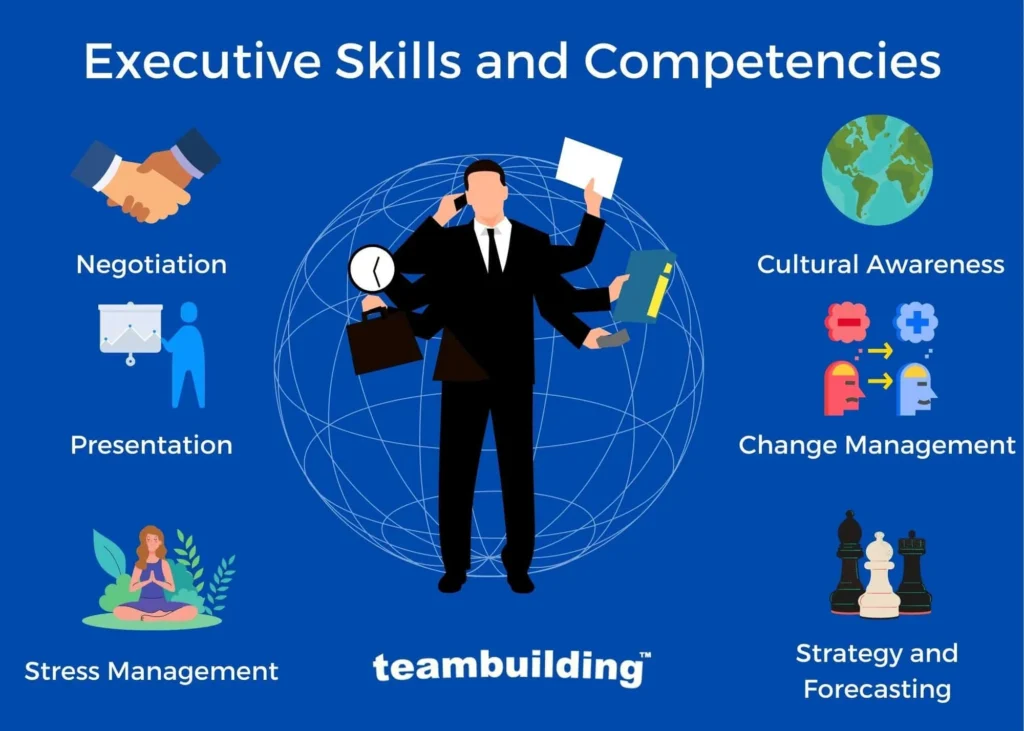How to Develop Leaders in 9 Strategic Steps
In today’s dynamic business landscape, effective leadership is the cornerstone of organizational success. Great leaders inspire, motivate, and guide teams towards achieving ambitious goals, navigating challenges, and driving innovation. However, developing leaders is no easy feat – it requires a strategic and comprehensive approach to identify, nurture, and empower individuals with the right mindset and skills.
In this article, we’ll explore nine proven steps to cultivate leadership talent within your organization, along with the benefits of investing in leadership development and practical tips to ensure a successful journey.
1. Define Leadership Competencies
The first step in developing leaders is to clearly define the key competencies that align with your company’s values, culture, and strategic objectives. These competencies serve as the foundation for identifying and assessing leadership potential, as well as designing tailored development programs.
Some common leadership competencies include:
- Strategic Thinking: The ability to think critically, anticipate trends, and develop long-term strategies.
- Emotional Intelligence: Self-awareness, empathy, and the ability to build and maintain positive relationships.
- Communication: Effective verbal and written communication skills to inspire and motivate others.
- Decision-making: The ability to analyze information, weigh options, and make timely and informed decisions.
- Adaptability: The willingness to embrace change, learn from failures, and pivot when necessary.
Tip: Involve stakeholders and subject matter experts in the competency mapping process to ensure a well-rounded and relevant set of leadership competencies for your organization.
2. Assess Current Leadership Capabilities
Once you’ve defined the desired leadership competencies, it’s crucial to assess the current capabilities within your organization. This assessment will help identify strengths, weaknesses, and gaps, allowing you to create tailored development plans for individuals and teams.

There are various assessment tools and methods you can leverage, including:
- 360-degree Feedback: Gather feedback from multiple sources, including managers, peers, direct reports, and even customers or clients, to gain a comprehensive understanding of an individual’s leadership skills and behaviors.
- Personality Assessments: Utilize validated personality assessments, such as the Myers-Briggs Type Indicator (MBTI) or DiSC, to understand an individual’s communication style, decision-making process, and preferred working environment.
- Leadership Simulations: Immerse potential leaders in realistic scenarios and observe their decision-making, problem-solving, and leadership abilities in action.
Case Study: Acme Corporation
Acme Corporation conducted a comprehensive leadership assessment using 360-degree feedback and personality assessments. The results revealed that while their managers excelled in task-oriented leadership, they lacked strong emotional intelligence and communication skills. This insight led to the development of a targeted leadership program focused on enhancing emotional intelligence and interpersonal communication.
3. Implement Mentorship and Coaching Programs
Mentorship and coaching programs are powerful tools for developing leadership skills. By pairing high-potential employees with experienced leaders, you provide invaluable guidance, support, and knowledge transfer.

Mentorship Programs:
- Establish formal mentorship programs that match mentors and mentees based on their strengths, goals, and developmental needs.
- Encourage informal mentoring relationships, where employees can seek guidance from leaders they admire and respect.
- Provide training and resources to ensure effective mentoring relationships and clear expectations.
Coaching Programs:
- Engage executive coaches or leadership development experts to work one-on-one with high-potential individuals.
- Offer group coaching sessions or workshops to address common leadership challenges and skill development.
- Encourage leaders to coach and support their direct reports, fostering a culture of continuous learning and growth.
> "A mentor is someone who sees more talent and ability within you than you see in yourself, and helps bring it out of you." - Bob Proctor
4. Offer Leadership Training and Development Opportunities
Providing comprehensive leadership training and development opportunities is essential for cultivating a pipeline of skilled and confident leaders. These opportunities should cover a wide range of essential skills and competencies, tailored to the specific needs of your organization.
Leadership Training Programs:
- Develop a curriculum that covers topics such as strategic thinking, decision-making, conflict resolution, change management, and team leadership.
- Incorporate a blended learning approach that combines classroom training, e-learning modules, case studies, and hands-on activities for effective knowledge retention and application.
- Encourage participation in external leadership development programs, conferences, or certifications to broaden perspectives and expose employees to industry best practices.
Development Opportunities:
- Offer job shadowing experiences, where high-potential employees can observe and learn from experienced leaders in action.
- Facilitate cross-functional projects or task forces, allowing individuals to collaborate and lead diverse teams.
- Provide access to leadership development resources, such as books, articles, podcasts, and online courses, to foster continuous learning.
Fact: According to a study by the Association for Talent Development, organizations that invest in leadership development experience a 24% higher profit margin compared to those that don't.
5. Promote Cross-functional Exposure and Job Rotations
Exposure to different business units, departments, or functional areas is crucial for developing a well-rounded and adaptable leadership skill set. Cross-functional collaboration and job rotations broaden employees’ perspectives, challenge their assumptions, and foster a deeper understanding of the organization’s operations and challenges.

Cross-functional Collaboration:
- Encourage cross-departmental projects and team assignments, where employees from different functions work together towards a common goal.
- Facilitate knowledge-sharing sessions or brown-bag lunches, where employees can learn about different areas of the business.
- Promote cross-functional mentoring relationships to foster collaboration and knowledge transfer across silos.
Job Rotations:
- Implement a structured job rotation program that allows high-potential employees to temporarily work in different roles or departments.
- Provide clear goals, expectations, and support during the rotation to ensure a meaningful learning experience.
- Encourage employees to share their learnings and insights upon completion of the rotation, fostering organizational knowledge sharing.
Case Study: Global Tech Solutions
At Global Tech Solutions, they implemented a job rotation program that allowed high-potential employees to spend six months in different departments, such as marketing, product development, and customer support. This exposure enabled them to develop a holistic understanding of the business, strengthen cross-functional collaboration, and cultivate adaptable leaders who could navigate various business challenges.
6. Empower Through Stretch Assignments and Special Projects
Providing opportunities for high-potential employees to step outside their comfort zones and take on challenging stretch assignments or special projects is a powerful way to develop leadership skills. These experiences allow individuals to put their abilities to the test, make decisions, solve problems, and learn from real-world scenarios.
Stretch Assignments:
- Temporarily assign high-potential employees to lead a team, project, or initiative that stretches their current capabilities.
- Provide support, resources, and guidance to help them navigate these challenging assignments successfully.
- Encourage risk-taking, experimentation, and learning from failures in a safe and supportive environment.
Special Projects:
- Identify strategic or cross-functional projects that require leadership, collaboration, and problem-solving skills.
- Assemble a diverse team of high-potential individuals to work on the project, fostering teamwork and leadership development.
- Offer opportunities for project team members to present their work and findings to senior leadership, enhancing communication and presentation skills.
Tip: Provide clear objectives, expectations, and feedback mechanisms for stretch assignments and special projects to ensure a meaningful and constructive learning experience for the participants.
7. Foster a Culture of Continuous Learning and Feedback
Leadership development thrives in an environment that values continuous learning, growth, and constructive feedback. By fostering a culture that celebrates and supports ongoing development, you create an ecosystem where leaders can continuously evolve and refine their skills.
Continuous Learning:
- Encourage a growth mindset and a passion for learning by providing access to educational resources, workshops, and training opportunities.
- Celebrate successes and failures as opportunities for growth and development, creating a safe space for experimentation and learning.
- Promote knowledge sharing by encouraging leaders to share their experiences, insights, and best practices with colleagues and teams.
Feedback and Coaching:
- Implement regular feedback loops, such as performance reviews, coaching sessions, and 360-degree feedback processes.
- Train leaders on how to provide constructive, actionable feedback that supports growth and development.
- Encourage peer-to-peer feedback and coaching, fostering a culture of collaboration and mutual support.
Quote: "Leadership and learning are indispensable to each other." - John F. Kennedy
8. Recognize and Reward Leadership Potential
Recognizing and rewarding leadership potential and achievements is crucial for motivating and retaining top talent within your organization. By showcasing successful leaders and their contributions, you inspire others to embark on their own leadership journeys and foster a culture of excellence.

Recognition and Reward Systems:
- Establish formal recognition and reward programs that celebrate leadership achievements, such as promotions, special assignments, or awards.
- Publicly acknowledge and showcase leadership success stories to inspire and motivate others within the organization.
- Provide opportunities for career advancement and increased responsibilities for those who demonstrate exceptional leadership skills and potential.
Incentives and Benefits:
- Offer competitive compensation packages and incentives for leadership roles to attract and retain top talent.
- Consider non-monetary rewards, such as additional training opportunities, mentorship programs, or flexible work arrangements, to cater to different employee preferences and motivations.
Fact: According to a study by the Society for Human Resource Management, organizations that effectively recognize and reward employees experience a 27% higher employee engagement and retention rate.
9. Measure and Evaluate Leadership Development Efforts
Measuring and evaluating the impact of your leadership development initiatives is crucial for ensuring their effectiveness and making data-driven adjustments as needed. By establishing clear key performance indicators (KPIs) and regularly assessing your programs, you can identify areas for improvement and optimize your approach.
Define Key Performance Indicators (KPIs):
- Establish KPIs that align with your organizational goals and leadership development objectives, such as employee engagement, retention rates, promotion rates, and leadership effectiveness metrics.
- Gather quantitative and qualitative data to measure the impact of your leadership development initiatives on these KPIs.
Continuous Evaluation and Improvement:
- Regularly assess the effectiveness of your leadership development programs through participant feedback, performance evaluations, and organizational metrics.
- Solicit input from stakeholders, including senior leaders, managers, and participants, to identify areas for improvement and gather new ideas.
- Analyze the data and feedback to make informed decisions and adjust your approach as needed to ensure continued success and relevance.
Case Study: TechXperts Inc.
At TechXperts Inc., they implemented a comprehensive leadership development program and established KPIs such as employee engagement scores, retention rates, and leadership competency assessments. Through regular evaluations and data analysis, they identified areas for improvement, such as enhancing emotional intelligence training and providing more hands-on learning opportunities. By making these adjustments, they saw a significant increase in employee engagement and a more robust leadership pipeline within the organization.
Benefits of Developing Leaders
Investing in leadership development has far-reaching benefits for your organization, including:
- Improved Succession Planning and Talent Pipeline: Building a strong pipeline of skilled and prepared leaders ensures a seamless transition during times of leadership changes or organizational growth.
- Enhanced Employee Engagement and Retention: Providing opportunities for growth and development increases job satisfaction, loyalty, and retention of top talent.
- Increased Innovation and Adaptability to Change: Effective leaders can navigate change, embrace new ideas, and drive innovation, keeping your organization competitive and agile.
- Stronger Organizational Culture and Alignment with Values: Developing leaders who embody your company’s values and culture reinforces a cohesive and purpose-driven workforce.
- Better Decision-making and Problem-solving Capabilities: Strong leadership skills enable better decision-making, problem-solving, and strategic thinking, leading to improved organizational performance.
- Competitive Advantage and Long-term Sustainability: A robust leadership pipeline positions your organization for long-term success and gives you a competitive edge in attracting and retaining top talent.
Tips for Successful Leadership Development
To ensure the success of your leadership development initiatives, consider the following tips:
- Align with Organizational Strategy and Goals: Ensure that your leadership development efforts are aligned with your company’s overall strategy, values, and goals to drive meaningful and relevant outcomes.
- Tailor to Individual Learning Styles and Career Aspirations: Recognize that individuals have different learning preferences and career aspirations. Offer personalized development paths and cater to diverse learning styles for maximum effectiveness.
- Encourage Experiential Learning and On-the-Job Application: Incorporate hands-on, experiential learning opportunities, such as stretch assignments, job rotations, and special projects, to reinforce theoretical knowledge with practical application.
- Foster a Supportive and Inclusive Environment: Create an environment that encourages open communication, feedback, and collaboration. Promote diversity and inclusion to leverage diverse perspectives and foster a culture of mutual respect and support.
- Leverage Technology and Virtual Learning Platforms: Embrace technology and virtual learning platforms to provide flexible and accessible leadership development opportunities, catering to remote teams and busy schedules.
- Continuously Evaluate and Refine: Regularly evaluate the effectiveness of your leadership development initiatives through data analysis, participant feedback, and stakeholder input. Be willing to adapt and refine your approach to ensure continuous improvement and relevance.
People Also Ask
What are the key leadership competencies to develop?
Common leadership competencies to focus on include strategic thinking, emotional intelligence, communication, decision-making, adaptability, team leadership, and conflict resolution. However, it’s essential to define the specific competencies that align with your organization’s values and goals.
How do you identify high-potential employees for leadership development?
Utilize a combination of performance evaluations, 360-degree feedback, personality assessments, and leadership simulations to identify individuals with strong leadership potential. Look for traits such as strategic thinking, problem-solving abilities, resilience, and a commitment to personal growth.
What are the most effective leadership development programs?
Effective leadership development programs typically include a blend of classroom training, e-learning modules, mentorship and coaching, job rotations, stretch assignments, and hands-on learning experiences. Tailoring the program to your organization’s specific needs and providing opportunities for practical application is crucial.
How do you measure the success of leadership development initiatives?
Define key performance indicators (KPIs) aligned with your organizational goals, such as employee engagement scores, retention rates, promotion rates, and leadership effectiveness metrics. Regularly assess these KPIs, gather participant feedback, and analyze data to evaluate the impact of your leadership development initiatives.
What are some common challenges in developing leaders within an organization?
Common challenges include securing buy-in and support from senior leadership, allocating sufficient resources (time and budget) for leadership development programs, addressing resistance to change, and creating a culture that values continuous learning and growth. Effective communication, stakeholder involvement, and continuous evaluation can help overcome these challenges.
Developing leaders is an ongoing journey that requires strategic planning, commitment, and a deep understanding of your organization’s unique needs and goals. By following these nine steps and embracing a culture of learning and growth, you can unlock the potential of your employees and build a strong leadership pipeline that will drive your organization towards sustainable success.
Remember, investing in leadership development is an investment in your company’s future, and the benefits will ripple throughout your entire organization, fostering a competitive edge, increased innovation, and long-term sustainability.

